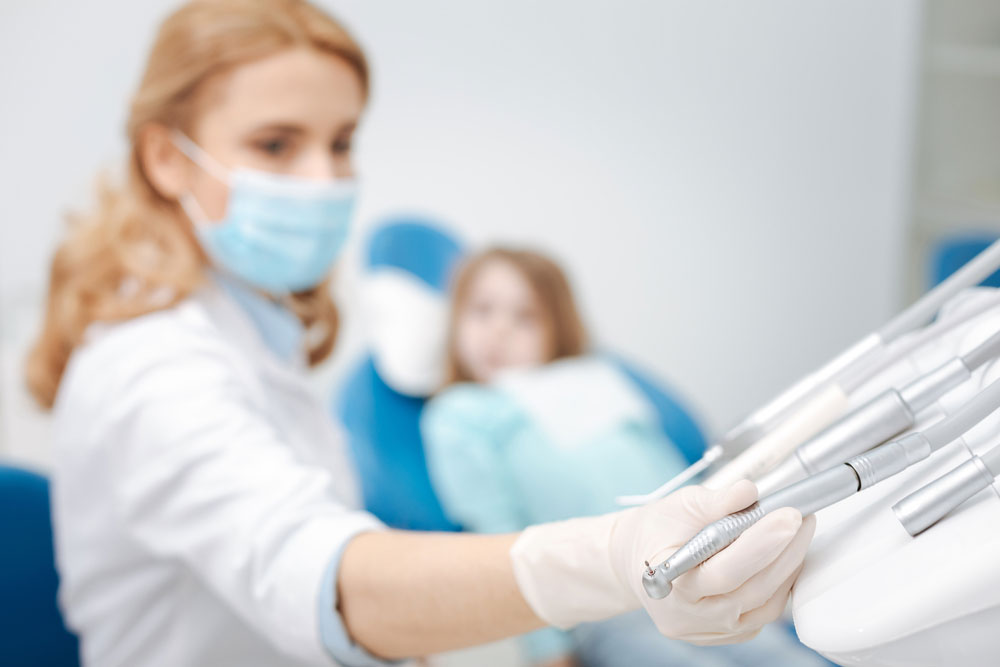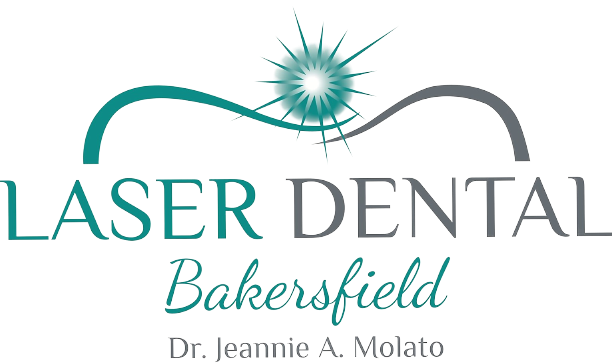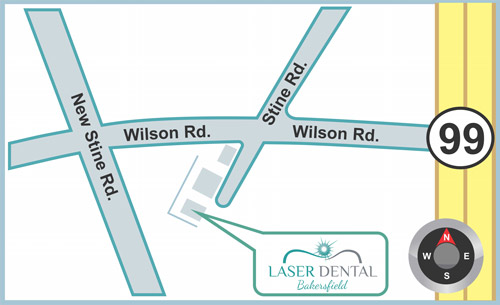The temporomandibular joint (TMJ) is essential for daily activities such as talking, eating, and facial expressions. When issues with this joint arise, they can lead to pain, discomfort, and limitations in jaw movement, significantly impacting quality of life. While surgical intervention is an option for severe cases, non-surgical treatments can effectively relieve pain and restore function for many patients.
In Bakersfield, CA, Laser Dental Bakersfield, led by Dr. Jeannie Molato, offers a variety of non-surgical TMJ treatment options tailored to meet individual needs. This blog will explore the most effective non-surgical approaches to TMJ management, including bite guards, physical therapy, and lifestyle adjustments.
Understanding TMJ Disorders
TMJ disorders can result from multiple causes, including jaw misalignment, teeth grinding, arthritis, or injury. These issues may lead to symptoms like jaw pain, difficulty chewing, clicking sounds, and even headaches or neck pain. Recognizing the symptoms early can help patients seek timely and effective treatment, often preventing the condition from worsening.
Bite Guards: Protecting the Joint from Excessive Pressure
One of the primary treatments for TMJ disorders is the use of customized bite guards or splints. These devices are tailored to each patient’s bite pattern and help reduce strain on the jaw joint by preventing teeth grinding (bruxism) and clenching.
- How Bite Guards Work
A bite guard, often worn during sleep, acts as a cushion between the upper and lower teeth, absorbing the pressure created by grinding and clenching. This reduced pressure prevents further wear and tear on the TMJ, promoting healing and reducing inflammation. - Types of Bite Guards
There are different types of bite guards, including soft, dual-laminate, and hard acrylic guards. Soft guards are often recommended for mild grinding, while hard acrylic guards are suited for severe cases. Dr. Jeannie Molato at Laser Dental Bakersfield will determine the best option based on the severity of your condition. - Benefits and Limitations
Bite guards can be a highly effective way to manage TMJ pain without invasive procedures. However, they do not address the root causes, such as misalignment or stress-related habits. For long-term relief, combining bite guards with other non-surgical treatments is often recommended.
Physical Therapy: Restoring Function and Reducing Pain
Physical therapy can play a critical role in TMJ disorder management. It involves targeted exercises and techniques designed to strengthen and stretch the jaw muscles, enhancing joint stability and range of motion.
- Therapeutic Exercises
A physical therapist specializing in TMJ will guide patients through exercises that stretch and strengthen the jaw, neck, and surrounding muscles. Common exercises include gentle jaw movements, resistance training, and stretching techniques that gradually improve function and reduce stiffness. - Manual Therapy Techniques
Physical therapists may also use manual therapy, which involves hands-on techniques to mobilize the joint and release muscle tension. Techniques such as trigger point therapy and myofascial release can be particularly effective for easing TMJ-related pain. - Ultrasound and Heat Therapy
Some physical therapy treatments include ultrasound or heat therapy to reduce inflammation and relieve muscle tension around the jaw. These modalities help increase blood flow, which can promote healing in the affected area. - Benefits of Physical Therapy
Physical therapy not only relieves pain but also addresses muscle imbalances and promotes long-term improvement. By combining strengthening and relaxation techniques, patients can achieve greater jaw stability and reduced pain without resorting to surgical interventions.
Lifestyle Adjustments: Small Changes, Big Impact
Lifestyle adjustments can significantly contribute to TMJ relief and prevent the condition from worsening. Dr. Molato at Laser Dental Bakersfield often advises patients to make specific changes that reduce stress on the TMJ.
- Mindful Eating Habits
Choosing soft foods and avoiding hard or chewy items can help reduce strain on the TMJ. Cutting food into smaller pieces and eating slowly can also alleviate pressure on the joint. - Posture Awareness
Poor posture, particularly forward head posture, can put undue stress on the TMJ. Patients are encouraged to maintain good posture throughout the day, especially when working at a desk or using electronic devices. - Managing Stress and Avoiding Clenching
Stress is a major contributor to teeth grinding and jaw clenching. Practicing mindfulness techniques, such as deep breathing and meditation, can help patients manage stress and avoid habits that exacerbate TMJ symptoms. - The Role of Rest
Giving the TMJ time to rest and recover can help alleviate symptoms. This includes avoiding excessive jaw movements, such as wide yawning or chewing gum, and refraining from biting on hard objects like pens or ice.
Acupuncture: An Alternative Approach
Acupuncture is an ancient practice that involves inserting thin needles into specific points on the body to alleviate pain and promote healing. For some TMJ patients, acupuncture offers relief by reducing muscle tension and promoting relaxation.
- How Acupuncture Works
Acupuncture is thought to stimulate the body’s natural pain-relieving mechanisms by targeting pressure points associated with TMJ pain. This practice can relax tight muscles around the jaw and promote overall stress reduction. - Scientific Backing and Limitations
Although acupuncture is not universally accepted as a primary treatment for TMJ, some studies indicate its effectiveness in pain reduction and relaxation. It can be used as a complementary treatment alongside other non-surgical options like bite guards and physical therapy. - Choosing a Qualified Practitioner
For safety and efficacy, it’s crucial to select a licensed acupuncturist familiar with TMJ disorders. Dr. Molato can help guide you toward reputable practitioners in Bakersfield who can provide this service as part of a holistic treatment plan.
Medication: Relief Through Anti-Inflammatories and Muscle Relaxants
For some patients, medications can provide short-term relief from TMJ pain and inflammation. Dr. Molato may recommend anti-inflammatory drugs or muscle relaxants as part of an overall non-surgical treatment plan.
- Anti-Inflammatory Medications
Non-steroidal anti-inflammatory drugs (NSAIDs) like ibuprofen can help reduce inflammation around the TMJ, relieving pain and swelling. These medications are often used in conjunction with other treatments like bite guards or physical therapy. - Muscle Relaxants
Muscle relaxants may be prescribed for patients with severe clenching or bruxism, helping to reduce tension in the jaw muscles. These medications are typically short-term solutions to manage acute pain, and they are used under medical supervision. - When to Consider Medication
While medications provide relief, they do not address the underlying cause of TMJ disorders. For sustainable improvement, they should be viewed as part of a broader treatment plan rather than a standalone solution.
Laser Therapy: Advanced Non-Invasive Pain Relief
Laser therapy, also known as cold laser therapy or low-level laser therapy (LLLT), is an emerging option for TMJ pain relief. It uses specific wavelengths of light to reduce pain and promote tissue healing around the TMJ.
- How Laser Therapy Works
Low-level lasers penetrate deep into the tissue, stimulating cellular repair and reducing inflammation. This non-invasive therapy is often painless and can be administered in a dental office. - Benefits and Considerations
Laser therapy can be a suitable option for patients seeking pain relief without invasive procedures. However, it may require multiple sessions to achieve noticeable results. Dr. Molato and her team at Laser Dental Bakersfield offer this cutting-edge treatment as part of a comprehensive approach to TMJ care.
Empowering TMJ Health with Non-Surgical Solutions
Non-surgical treatments offer a pathway to relief and healing for those suffering from TMJ disorders. From bite guards that reduce strain to physical therapy that restores function, Laser Dental Bakersfield provides comprehensive, individualized care. By combining these methods, patients can achieve long-term relief without resorting to invasive procedures. Dr. Jeannie Molato and her team are dedicated to helping you explore these non-surgical options for a healthier, pain-free TMJ.
Sources:
- Manfredini, D., Guarda-Nardini, L., Ferronato, G., & Mulder, M. H. (2011). TMJ Disorders and Therapy. Oral and Maxillofacial Surgery Clinics of North America.
- Greene, C. S. (2010). Diagnosis and Treatment of Temporomandibular Disorders: Past, Present, and Future. Journal of Dental Research.
- Michelotti, A., & Cioffi, I. (2020). Advances in Non-Surgical Management of TMJ Disorders. Journal of Clinical Medicine.










